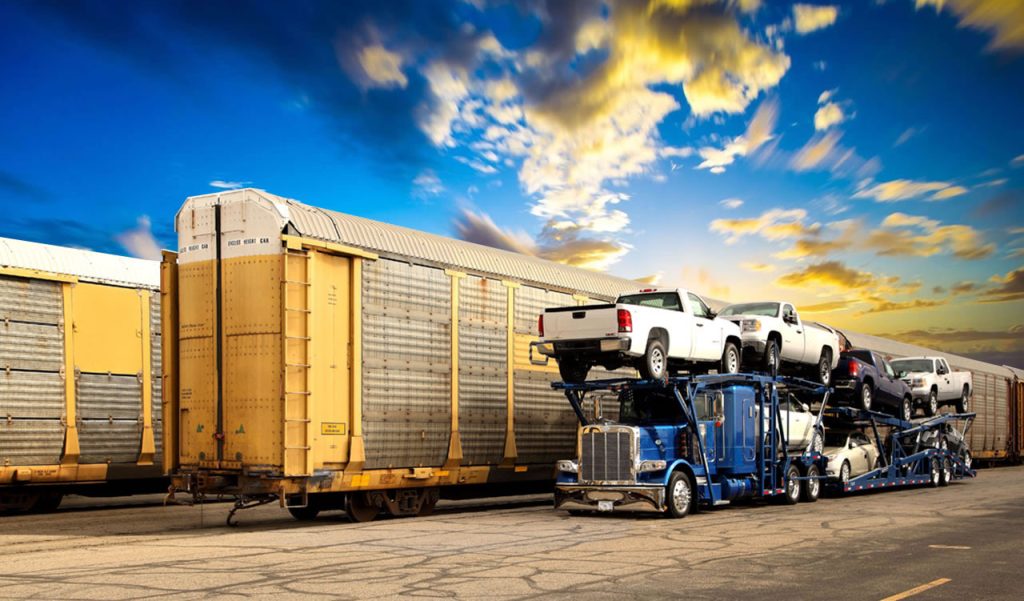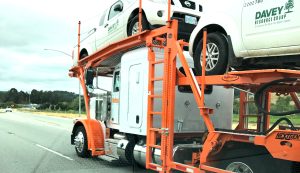Understanding Handicapped-Accessible Vehicle Modifications
Understanding handicapped-accessible vehicle modifications is essential for anyone considering shipping such a vehicle. These modifications, which can range from minor adjustments to extensive overhauls, are designed to enable individuals with disabilities to drive or be transported safely and comfortably. Common adaptations include the installation of wheelchair ramps or lifts, which allow for easy entry and exit from the vehicle. These ramps can either be manual or automatic, depending on the user’s needs and preferences.
Another prevalent modification involves altering the driver’s area to accommodate various physical limitations. This may include installing hand controls for those who cannot use traditional foot pedals or adjusting seat heights for easier transfer from a wheelchair to the driver’s seat. Swivel seats that rotate and extend outside the car can also provide significant assistance.
Floor plans inside these vehicles often undergo changes as well. Lowered floors are typical in minivans, providing additional headroom and making it easier for wheelchair users to navigate inside the vehicle. Additionally, tie-down systems are installed to secure wheelchairs during transit, ensuring safety.
These modifications often require specialized knowledge and equipment during shipping. Given that these vehicles might have non-standard dimensions or weights due to added equipment like lifts or lowered floors, it’s crucial for shippers to be aware of these details beforehand. Proper handling ensures that no damage occurs during transit and that all equipment remains functional upon arrival.
Understanding these modifications not only informs potential shipping considerations but also highlights the importance of tailored solutions in promoting independence and mobility for individuals with disabilities.
Legal Considerations For Shipping Modified Vehicles
When shipping a vehicle that has been modified for handicapped access, it is crucial to be aware of the legal considerations that accompany such an endeavor. One of the foremost concerns is compliance with the Americans with Disabilities Act (ADA) and other relevant legislation that governs accessibility modifications. These laws ensure that vehicles modified for handicapped access meet specific standards, which can affect their transport requirements.
Ensuring that your vehicle adheres to these standards can help avoid potential legal issues during shipping.
Another critical aspect involves the transportation regulations set forth by both federal and state authorities. The Federal Motor Carrier Safety Administration (FMCSA) provides guidelines regarding the dimensions and weight of vehicles being transported, including those with modifications such as wheelchair lifts or ramps. Modified vehicles often exceed standard dimensions, necessitating special permits or additional documentation to comply with these regulations.
Insurance is another pivotal consideration. Standard Car Transport insurance may not cover specialized modifications, so it’s essential to verify coverage specifics with your insurance provider and possibly seek additional coverage tailored for modified vehicles. This ensures financial protection in case of damage during transit.
Moreover, when selecting a shipping company, it’s important to choose one experienced in handling modified vehicles. These companies are more likely to be familiar with the necessary legal requirements and can offer assurances regarding safe and compliant transportation.
Lastly, always keep detailed records of all modifications made to your vehicle along with any certifications or inspections completed prior to shipping. This documentation can prove invaluable if any disputes arise regarding compliance or condition upon delivery.
In summary, understanding and navigating these legal considerations is paramount in ensuring a smooth and compliant shipment process for your modified handicapped-accessible vehicle.
Choosing The Right Shipping Company For Handicapped-Accessible Vehicles
When it comes to shipping a vehicle that has been modified for handicapped access, choosing the right shipping company is paramount. Not all Car Transport companies have the expertise or equipment necessary to handle vehicles with specialized modifications like wheelchair ramps, lifts, or hand controls. Therefore, it’s crucial to select a company that understands and respects the unique needs of such vehicles.
Begin by researching companies that explicitly state their experience with handicapped-accessible vehicles. Look for testimonials or case studies on their websites that highlight successful transports of similar vehicles. This can give you an idea of their competency in handling your specific requirements. Additionally, inquire about the type of transport options they offer; enclosed transport might be more suitable for protecting delicate modifications from weather and road debris.
Communication is key when selecting a shipping company. Speak directly with customer service representatives and ask detailed questions about how they plan to secure and protect your vehicle during transit. A reputable company will provide clear answers and may even offer customized solutions tailored to your vehicle’s modifications.
Insurance coverage is another critical factor. Ensure the shipping company offers comprehensive insurance that covers not just the vehicle itself but also its specialized equipment. This added layer of protection can provide peace of mind in case any damage occurs during transportation.
Lastly, consider obtaining multiple quotes but remember that cost should not be the sole deciding factor. The cheapest option might lack essential services or adequate insurance coverage, which could end up costing more in the long run if issues arise.
By meticulously researching and communicating with potential shipping companies, you can ensure a smooth and secure transportation process for your handicapped-accessible vehicle, safeguarding both its functionality and value.
Preparing Your Modified Vehicle For Transport
Preparing your modified vehicle for transport involves several key steps to ensure its safety and condition during transit. Begin by thoroughly cleaning both the interior and exterior of the vehicle. This not only makes it easier to inspect for pre-existing damage but also helps in identifying any issues that might arise during transportation. Take detailed photographs from multiple angles, documenting the current state of your vehicle.
These images will serve as a valuable record should you need to file an insurance claim.
Next, secure all loose items inside the vehicle. Modified vehicles, especially those adapted for handicapped access, often contain specialized equipment such as ramps, lifts, or swivel seats. Ensure these components are properly stowed and locked in place to prevent movement and potential damage during transport. If possible, detach removable parts and store them separately or make sure they are firmly secured.
Check fluid levels and tire pressure before handing over your vehicle to the transport company. This step is crucial because imbalanced fluids can lead to leaks or mechanical issues when the car is being moved. Additionally, keeping tires properly inflated helps avoid unnecessary strain on the suspension system.
Before shipping, disable any alarms or anti-theft devices that could accidentally activate during transit. Inform your chosen transport company about any specific instructions related to operating or handling your modified vehicle; this includes how to engage or disengage wheelchair lifts and other adaptive features.
Lastly, review your insurance coverage with both your auto insurer and the transportation company. Confirm what is covered under their policies in case of damage during transit. By taking these meticulous steps, you can ensure that your handicapped-accessible modified vehicle arrives at its destination safely and in optimal condition.
Insurance And Liability Concerns During Shipping
When it comes to shipping a vehicle that has been modified for handicapped access, insurance and liability concerns are paramount. The unique modifications in such vehicles, whether they involve wheelchair lifts, hand controls, or other specialized adaptations, represent significant investments both financially and functionally. Ensuring these enhancements are adequately protected during transit is crucial.
Firstly, it’s essential to verify that the shipping company offers comprehensive insurance coverage that includes custom modifications. Standard vehicle shipping insurance might not cover specialized equipment or alterations. Therefore, discussing the specifics of your vehicle’s modifications with the transporter and confirming in writing that these elements are insured is critical.
Additionally, consider obtaining supplementary insurance if the shipping company’s policy does not fully cover your needs. This extra layer of protection can provide peace of mind knowing that any potential damages incurred during transit will be compensated for adequately.
Liability also plays a significant role in this process. It’s important to understand who is responsible if damage occurs during loading, transportation, or unloading. Reputable transport companies often conduct thorough inspections before and after shipment to document the vehicle’s condition. Be present for these inspections if possible and ensure all modifications are noted accurately.
Moreover, thoroughly review all contracts and agreements before signing them. Look for clauses related to liability in case of damage to custom features. Clear communication with the shipping company about the nature of your vehicle’s adaptations can prevent misunderstandings and ensure they take extra precautions when handling your specially equipped car.
In conclusion, addressing insurance and liability concerns proactively can safeguard your investment in a handicapped-accessible vehicle during its journey from one location to another. Proper coverage ensures that any unforeseen issues do not result in undue financial burdens or loss of essential functionality for those relying on these crucial modifications.
Cost Factors Involved In Shipping A Modified Vehicle
When shipping a vehicle that has been modified for handicapped access, several cost factors come into play, making the process distinct from transporting a standard vehicle. One of the primary considerations is the size and weight of the modified vehicle. Accessibility modifications such as ramps, lifts, or specialized seating can add significant weight and bulk to the vehicle. This increased size and weight often result in higher shipping costs due to the need for specialized equipment or additional space on a transport carrier.
Another factor influencing cost is the type of transport required. Modified vehicles often demand enclosed transport to ensure protection from external elements like weather conditions that could potentially damage sensitive equipment. Enclosed carriers are more expensive than open-air options but offer enhanced security and protection.
The condition of the vehicle also plays a crucial role in determining shipping costs. If the modifications affect drivability, special loading and unloading procedures may be necessary. Non-operational vehicles require additional labor and equipment, such as winches or cranes, further increasing expenses.
Geographical factors cannot be overlooked either. The distance between pickup and delivery locations significantly impacts fuel costs and driver time. Additionally, if either location is in a remote or difficult-to-access area, extra charges may apply for navigating challenging terrains or limited-access roads.
Lastly, insurance coverage is essential when transporting a modified vehicle due to its unique features and potentially higher value compared to standard models. Ensuring comprehensive coverage during transit might incur additional premiums but provides peace of mind against potential damages.
In essence, while shipping a modified vehicle involves several nuanced cost factors—ranging from size and transport type to operational status and geographical considerations—each element ensures that the specialized needs of handicapped-accessible vehicles are adequately met during transit.
Post-Shipping Inspection And Ensuring Safe Delivery
Once your vehicle, modified for handicapped access, has been shipped to its destination, conducting a thorough post-shipping inspection is crucial to ensure it has arrived safely and without damage. This step is not only pivotal for your peace of mind but also essential for validating any insurance claims in case of damage.
Begin by examining the exterior of the vehicle for any visible signs of damage such as scratches, dents, or paint chips that were not present before shipping. Pay special attention to areas that might have been exposed during transit. It’s advisable to compare the current state with pre-shipment photographs you took as part of your preparation.
Next, move on to inspect the interior modifications designed for handicapped access. Carefully check all adaptive equipment such as ramps, lifts, hand controls, and seating arrangements. Ensure that these components are functioning correctly and have not suffered any mechanical stress or damage during shipping. For instance, test ramps and lifts by operating them fully; they should work smoothly without unusual noises or resistance.
If any issues are detected—whether cosmetic or functional—document them immediately with detailed notes and photographs. Contact the shipping company promptly to report these findings; most reputable companies will have a claims process in place for resolving such issues.
Additionally, take a short drive in the vehicle to confirm that its performance hasn’t been compromised during transit. Listen for unusual sounds and pay attention to how it handles on the road.
Ultimately, this meticulous post-shipping inspection ensures that your specially modified vehicle remains safe and functional after its journey. By taking these steps diligently, you can address potential problems quickly and maintain the reliability of your transportation solution tailored for handicapped access.



